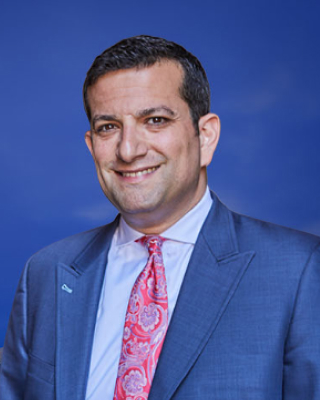Around 80 percent of motorcycle accidents result in injury or death, with motorcyclists and their passengers being 28 times more likely to die in an accident than the occupants of four-wheeled vehicles such as cars and trucks. As a motorcyclist, you can increase your chances of surviving an accident. Here is a look at five actions you can take.
Become an Expert

Motorcycle riders are most likely involved, injured, or even killed in a motorcycle accident within their first year of riding. Motorcycles require an entirely different skill set to operate than passenger vehicles. Knowing how to avoid an accident, controlling the bike during emergency maneuvers, and shedding speed to reduce the severity of an imminent crash are crucial skills to learn.
All states require a motorcycle endorsement plus the operator's regular driver's license. This endorsement generally requires the rider to pass a test showing that they know the basic skills involved in operating the motorcycle and the motorcycle traffic laws.
However, the training offered for those who want a motorcycle endorsement often fails to provide the quality of training needed to safely handle real-life roadway conditions such as traffic congestion, aggressive drivers, and other risks.
Additional courses can provide riders with more information and tools to avoid and survive accidents, and these courses aren’t just for beginners. Experienced riders can also benefit from taking refresher courses regularly to learn additional defensive riding techniques that can help keep them safe.
Different Motorcycles Require Different Skills
In addition to knowing the rules and techniques involved in riding any motorcycle, the motorcycle must match the rider's intentions and skills.
Riders can legally operate several types of motorcycles on public roadways, including:
- Cruisers: Often selected for comfort and ease of use.
- Sportbikes: Known as agile, lightweight, and effective, but lack the comfort of a cruiser and can be too powerful for beginning riders.
- Choppers: Feature the classic, iconic look that many envision when they hear about motorcycles but are difficult to operate.
- Touring motorcycles: Similar to cruisers but with the addition of luggage compartments and other features aimed at increasing comfort for long rides. They feature the same ease of operation, though the size of the bike can be daunting to new riders.
New riders should ensure that they do not purchase a motorcycle that is too big for them or too powerful to handle.
ATGATT: All the Gear, All the Time
ATGATT stands for “All the gear, all the time” and is one of the most important actions a rider can take to increase safety during a motorcycle crash.
According to the National Safety Council (NSC), using a Department of Transportation (DOT)-approved helmet when riding a motorcycle reduces the rider’s risk of suffering fatal injuries in a crash by 37 percent. It reduces the risk of death to their passengers by around 41 percent. DOT helmets refer to those that meet the federally recognized standards for helmet performance in accidents.
Individuals should be aware that they should periodically replace helmets to avoid a loss of protection due to degrading materials over time. Additionally, riders should replace helmets when involved in an accident where their head strikes a surface or if they drop the helmet, as these incidents can damage the foam interior that cushions the rider’s head in an accident. Helmets are single-use accident-protecting devices.
While perhaps the most important in preventing traumatic brain injuries and fatalities associated with motorcycle accidents, the helmet isn’t the only type of gear protecting the motorcyclist.
Other motorcycle safety gear includes:
- Eye protection.
- A riding suit or jacket and pants made of leather or ballistic material with built-in protection for shoulders, back, elbows, and knees.
- Riding gloves made of abrasive-resistant material.
- Motorcycle boots that protect the ankles and feet.
- Earplugs to prevent damage to the ears from the wind while riding.
- Bright-colored vests that help make the rider more visible to motorists.
Riding gear should be well fitted to the wearer’s body but allow full range of motion.
Avoid Alcohol (and Drunk Drivers) When Riding
Drunk driving or riding is a major cause of fatal accidents on public roadways in the U.S., including those involving motorcyclists. More than a quarter of all motorcyclists involved in fatal accidents had a blood alcohol content over the legal limit of 0.08 grams of alcohol per deciliter of blood during the crash. Additionally, many motorcyclists receive the deficits that alcohol impairment creates to a driver’s ability to operate their car safely on the roadway.
Alcohol impairment creates many deficits for both riders and drivers, including:
- Difficulty making good driving or riding decisions
- Difficulty controlling one’s speed or lane position
- Loss of the ability to track moving targets as needed for road surveillance
- Difficulty detecting changes in traffic signals that indicate the need to yield to other roadway users
- Loss of the ability to effectively multi-task, controlling speed, lane position, surveillance, and other driving activities simultaneously
While alcohol-involved traffic accidents can (and do) occur at any time of the day or night, they are more likely to occur on weekends, at night, and around holidays such as July 4, when drivers and riders celebrate with family and friends.
Reduce the Need for Speed
Speeding drivers and riders are among the most common causes of fatal accidents involving all types of vehicles on the roadway.
People should never drive faster than posted speed limits or too fast for the weather and traffic conditions because:
- A speeding driver or rider has less time to perceive a hazard that requires them to brake or swerve to avoid an accident.
- Once a speeding driver has detected the need to react to a roadway hazard by braking, the vehicle will not instantly stop but rather continue traveling forward until the brakes can pull its weight to a complete stop. The distance a breaking vehicle needs to stop depends on the vehicle's weight, road conditions, tire conditions, and speed.
- Quick braking is even more dangerous for motorcyclists than for drivers. When a rider “slams on the brakes,” their weight shifts to the front of the bike, relieving pressure on the rear tire that can cause it to lose traction, while the excess weight on the front can overload the front tire and cause it to lock, resulting in a loss of control.
- When a collision occurs, an increased speed means increased force, a higher crash severity, and a greater likelihood of severe or fatal injuries for the rider.
- Speeding cars and motorcycles make it difficult for other drivers to properly determine if there is a safe gap in traffic to enter a roadway or change travel lanes, resulting in an increased risk of a collision.
Light It Up

As explained by Ride Apart, motorcycles have a smaller, slimmer frame than other vehicles on the roadway but fewer lights and the ability to accelerate and decelerate faster than cars can. These factors create a major hazard for motorcyclists: other drivers often cannot see or do not notice them.
As long as the motorcycle has the required headlights to be legally operated on the roadway, it is the driver's responsibility to see them. However, in the reality of public roads, drivers are often distracted, impatient, and prone to changing lanes without checking their blind spots or entering roadways without fully ensuring that no vehicles are approaching.
There are several suggestions to make your motorcycle more visible to other drivers, including:
- Buy a brightly colored motorcycle. During daytime or nighttime riding, the pop of color can be just enough in some circumstances to capture the driver’s attention, even for a split second, and cause them to take action to avoid a collision. Even if you own a dark-colored motorcycle, reflective tape can act as an independent light source and help drivers see you at night.
- In addition to adding color to the motorcycle, those who want to increase their visibility can also add color through their gear, including brightly colored helmets and riding apparel.
- Many riders use their high beams for daytime riding. During the day, the lights will not blind other roadway users but will provide another visual cue to capture the driver’s attention.
- Auxiliary lights on both the front and back of the bike can also help alert drivers to your presence, particularly if they feature varying intensities or even a strobing effect.
Seeking Compensation After a Fatal Motorcycle Accident
When a negligent driver kills a motorcyclist, their family members can seek compensation for the expenses and impacts they’ve incurred due to that loss through a wrongful death claim. The family can file a claim against the at-fault driver’s auto insurance policy. If the insurance provider fails to pay the claim outright or through a settlement agreement, the family can file in civil court as a wrongful death lawsuit within the state’s statute of limitations, or time limit, for such claims.
Family members should understand that a failure to file a wrongful death lawsuit within the statute of limitations will generally bar them from using the court system to seek compensation. Without the threat of a lawsuit, most insurance companies will be reluctant to take the claim seriously or feel the need to offer fair compensation, as there is no longer the chance of an expensive and uncertain lawsuit if they don’t comply.
How to Prove Negligence in a Fatal Motorcycle Accident
As with personal injury claims, wrongful death claims require the claimants to prove that someone else’s negligent behavior was the cause of the accident. The claimant and their attorney must prove negligence in a wrongful death motorcycle accident claim by showing:
- The driver needed to drive their vehicle safely and legally to avoid causing injuries or property damage to others.
- There was a breach in the driver’s duty when they took actions contrary to the avoidance of harm.
- Because of this breach, a motorcycle-involved accident occurred, in which the deceased suffered fatal injuries.
The Compensation Available in Wrongful Death Motorcycle Accident Claims
The family members of a motorcyclist killed in an accident caused by someone else’s negligence can seek compensation for the expenses and psychological impacts of their loss.
They can seek compensation for:
- Expenses related to medical treatment of the deceased’s final injury, funeral services, and burial or cremation
- The loss of support that the decedent provided for their family
- The loss of inheritance and net accumulations to the deceased’s estate
- The deceased’s loss of income and benefits they would have likely earned through their career had they survived the accident
- The loss of guidance, comfort, and society that the decedent provided for their loved ones
If you have been injured or lost a loved one due to a motorcycle accident caused by a negligent driver, contact an experienced motorcycle accident lawyer to learn more about your legal options. Let a skilled team of legal professionals pursue the compensation and justice you deserve for your accident.
